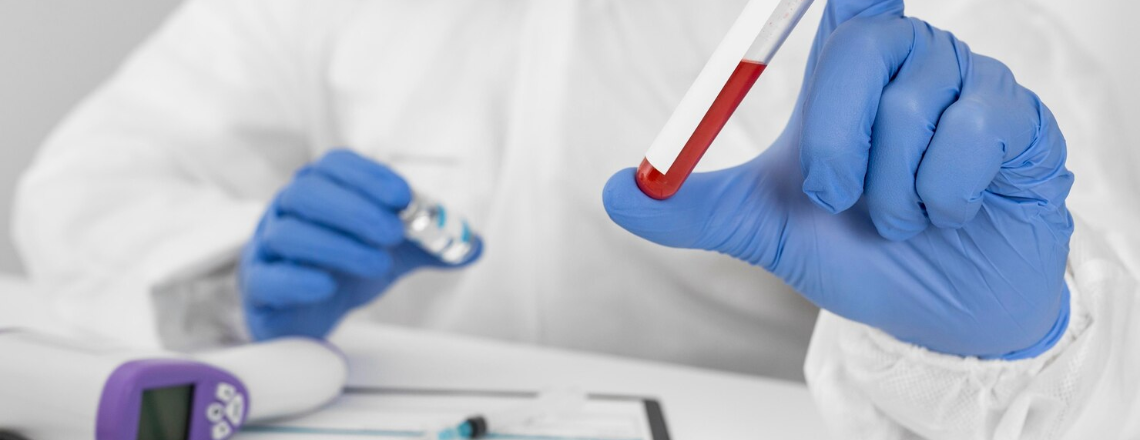Sexual Transmitted Disease Test
Published Jan. 20, 2024
By Hopkins Medtech
What is Sexual Transmitted Disease?
Sexually transmitted diseases (STDs), also known as sexually transmitted infections (STIs), are infections that spread through sexual contact, including vaginal, anal, or oral sex. These infections are caused by bacteria, viruses, or parasites and can affect individuals of any age, gender, or sexual orientation.
Many STDs may not cause noticeable symptoms immediately after infection, leading to asymptomatic carriers who can still transmit the infection. When symptoms do occur, they can vary widely depending on the type of infection and may include genital sores, unusual discharge, pain during urination, itching, rashes, or flu-like symptoms.
What are the different types of STDs?
Bacterial Infections: Examples include chlamydia, gonorrhea, and syphilis.
Viral Infections: Common viral STDs include herpes (HSV), human papillomavirus (HPV), HIV (which can lead to AIDS), and hepatitis B and C.
Parasitic Infections: Trichomoniasis is a common parasitic STD.
How are sexually transmitted diseases (STDs) diagnosed?
Eager to rule out a cancer diagnosis, patients may focus on the potential benefits of multi-cancer early detection tests while overlooking the risks and limitations. Multi-cancer tests may generate false-positive results, indicating the presence of cancer when none exists. This can lead to unnecessary anxiety, further invasive testing, and potentially unnecessary treatments or interventions.
Detecting slow-growing or indolent cancers that may never cause harm or lead to symptoms during a person’s lifetime can result in overdiagnosis. This may lead to unnecessary treatments that pose risks without providing clear benefits.
There are concerns that early-stage tumors won’t provide much DNA. This means the tumors may have to be further along to generate enough DNA to be reliably detected by the blood test. Multi-cancer tests might have limitations in their sensitivity and specificity, potentially missing certain types or stages of cancer or identifying non-cancerous conditions as cancerous.
1. Medical History and Physical Examination:
Healthcare providers typically begin by discussing the individual’s sexual history, symptoms, and potential exposure to STDs. They perform a physical examination to check for visible signs of infection, such as sores, rashes, or discharge.
2. Laboratory Tests:
Blood Tests: Blood samples are analyzed to detect antibodies or antigens associated with certain STDs, such as HIV, syphilis, or hepatitis.
Urine Samples: Urine tests can detect bacteria associated with STDs like chlamydia and gonorrhea.
Genital Swabs: Swabs of genital, anal, or oral areas may be taken to collect samples for laboratory testing. This method is used to detect various STDs, including chlamydia, gonorrhea, herpes, and HPV.
Culture Tests: Cultures of samples collected from sores or lesions can identify specific bacteria or viruses causing infections like herpes or chancroid.
Molecular Tests (Nucleic Acid Amplification Tests – NAATs): Highly sensitive tests that detect genetic material (DNA or RNA) of pathogens, commonly used for diagnosing chlamydia, gonorrhea, and other infections.
3. Visual Inspection:
In some cases, STDs like genital warts (caused by HPV) or pubic lice can be diagnosed through visual inspection of the affected area.
4. Screening Tests:
Some STDs, such as HIV, may be diagnosed through routine screenings even in the absence of symptoms, especially for individuals with certain risk factors.
5. Partner Testing:
Healthcare providers might recommend testing for sexual partners of individuals diagnosed with certain STDs to prevent reinfection and further spread.
6. Rapid Tests:
Some clinics or healthcare facilities offer rapid tests that provide quick results for certain infections like HIV or syphilis, allowing for immediate treatment or counseling.
